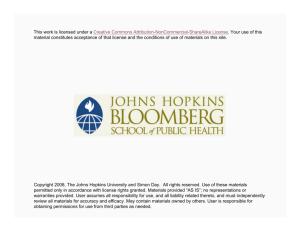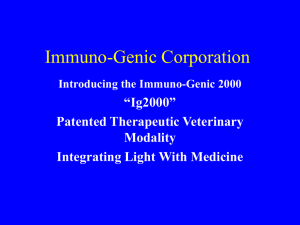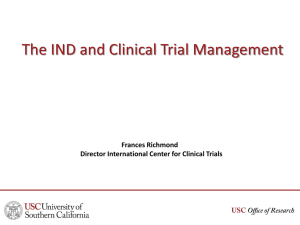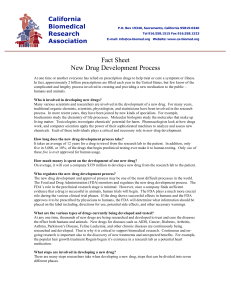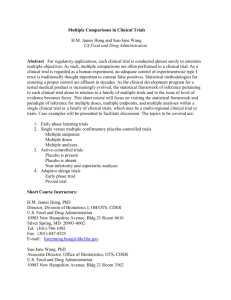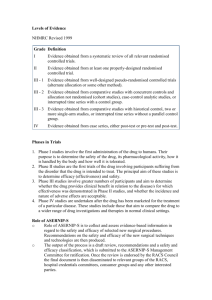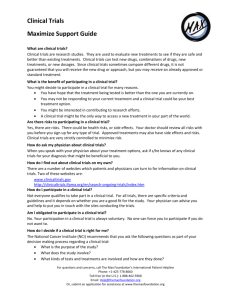Document
advertisement
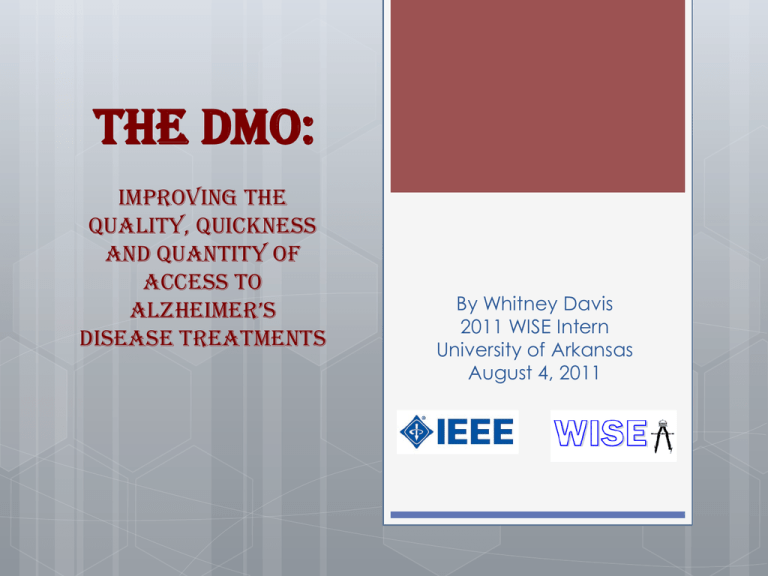
The DMO: Improving the Quality, Quickness and Quantity of Access to Alzheimer’s Disease Treatments By Whitney Davis 2011 WISE Intern University of Arkansas August 4, 2011 US Food and Drug Administration FD&C Act passed in 1938 (safety) Kefauver Harris Amendment in 1962 (efficacy) Only entity legally responsible for approval of: Medical devices, food, vaccines, veterinary treatments, radiation-emitting products, cosmetics, tobacco products, and drugs for all diseases, conditions, and products Wheel chairs Heart Monitors Imaging Systems Catheter Hearing Aids Defibrillator Xray Systems MS Biologics Dietary Supplements Animal Feed Vaccines Arthritis Pacem akers Alzheimer’s Disease Drugs Tanning Products Food Additives Vet Products Food Lou Gehrig’s Smallpox Infant Formulas Cardiov ascular Disease West Nile Virus Tobacco Products Asthma Breast Implants Blood Products HIV Cosmetics Radiation -emitting Products Medical Devices Hepatitis Addison’s Disease Cancer Fertility Drugs Lupus SARS Artificial Hearts Influenza Heart Valves Overview: Alzheimer’s DiseAse A progressive, degenerative disorder that attacks the brain's nerve cells, or neurons, resulting in behavioral changes and loss of memory, thinking, and language skills 6th Leading Cause of Death in US Average life expectancy after diagnosis is 8 years Age is greatest risk factor 5.4 million people live with AD Economic Impact of AD Total cost for care: $183 billion Annual cost of care: $18,500 - $36,000 Unpaid care in 2010: 14.9 million family & friends provided 17 billion hours = $202.6 billion Costs US businesses $60 billion a year Medicare payments are 3x higher Medicaid payments are 9x higher Phase IV: Safety & Efficacy Current FDA Challenges Safety Efficacy Safety & Efficacy To Develop A Drug: o Average Time: 10 years o Average Cost: $1 billion o User Fee: $1 million Current AD Treatments Name: Phase: Use: Success: Completed: Methylene Blue 2 Prevent aggregati on of tau protein fibers Positive Yes PBT-2 2 Prevent Positive aggregati on of betaamyloid into plaques Yes Solanezumab 3 Labproduced antibody to betaamyloid N/A No Government Reactions Fast Track Accelerated Track product must concern a serious or life-threatening condition and has to have potential to address an unmet medical need allows manufacturers to submit sections of their NDA to the FDA as they are ready rather than submitting a complete application at one time can meet with FDA so that components of clinical study design and presentation can be clearly defined accelerates approval of a drug that provides a “meaningful therapeutic benefit…over existing treatments” approval based ongoing clinical trials instead of survival rates or disease progression, a “surrogate endpoint that is reasonably likely…to predict clinical benefit” is used Priority Review Intended for products believed to address unmet needs shortens the approval decision from 10 months to 6 months Results o o o Manufacturers have requested Fast Track designation for 569 drugs since the Fast Track program was set into law 74.5% of those drug requests were granted Of products with Fast Track designation, 10.6% of the drugs were approved Current FDA Challenges Economically Unmanageable Amount of Responsibility Single Option for Drug Developers Inefficient In Accurately Perceiving Demand Can’t specify around a particular disease Blanket “safety” definition Economically Unmanageable Amount of Responsibility o o o Needs funds to match human resources & facilities to responsibility Financial resources get spread thin More funds with little production Economically Unmanageable Amount of Responsibility Highly Single Option restricted early access except through clinical trials No personalization No incentive to improve: Trials Cost Access Inefficient In Accurately Perceiving Demand Revenue not directly affected by demand Revenue always guaranteed The DMO: Direct Market Option After submitting an IND, drug developer will have option to pursue DMO parallel to the conventional FDA approval track Can legally gain approval by free market organization Only requirement: drug developer must enter into a contract with organization in which the drug developer possesses liability for unknown or unlisted adverse effects Drug developer can run clinical trials set under different conditions and methods by a free market organization Organization responsible for: post-market research fining the company for false labeling and advertising as seen fit. Open More Options More approved drugs Better specialize tradeoff of risk vs. benefit potentially earlier access to drugs More competition to meet demand more efficient trials faster access cheaper drugs cheaper user fees More Accurately Meet Demand Revenue directly affected by demand Can specialize & require less resources Focus funds for better quality Questions? Whitney Davis IEEE – WISE Intern wxd003@uark.edu
